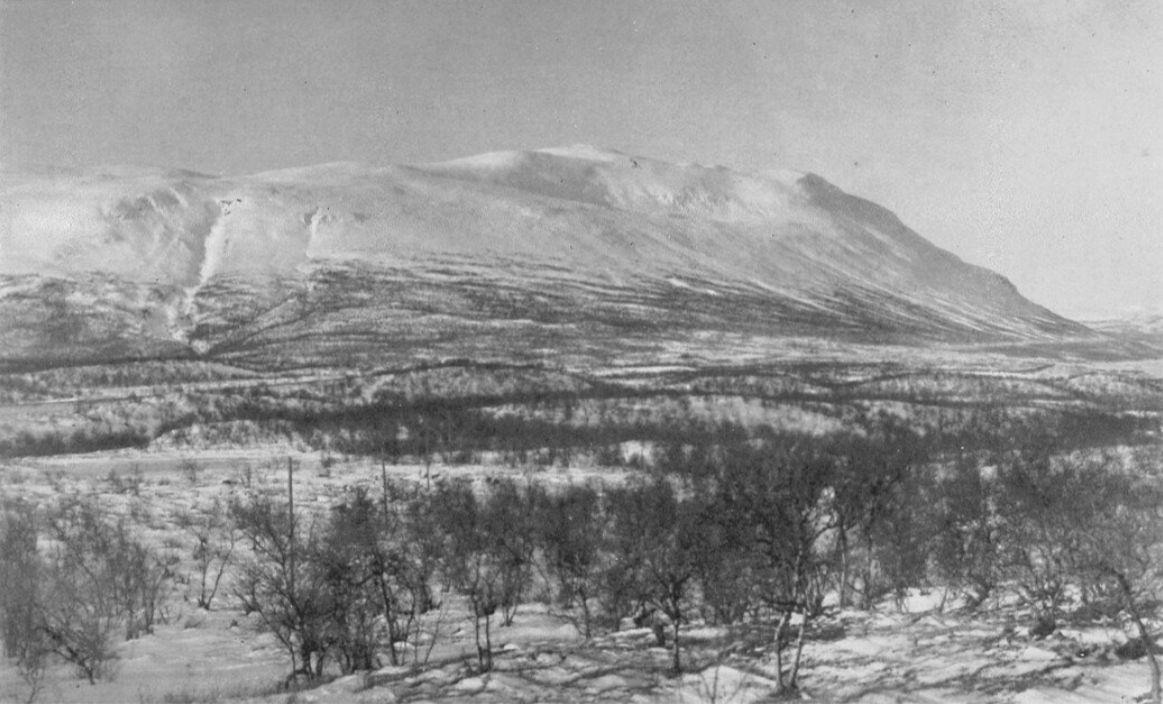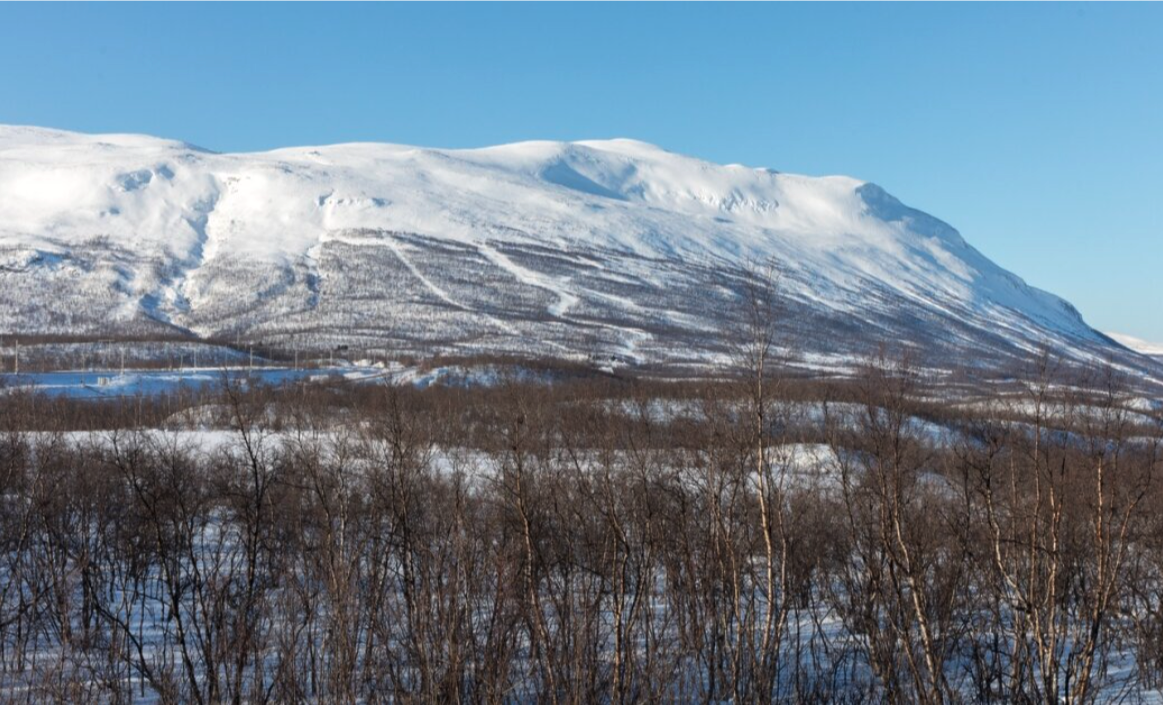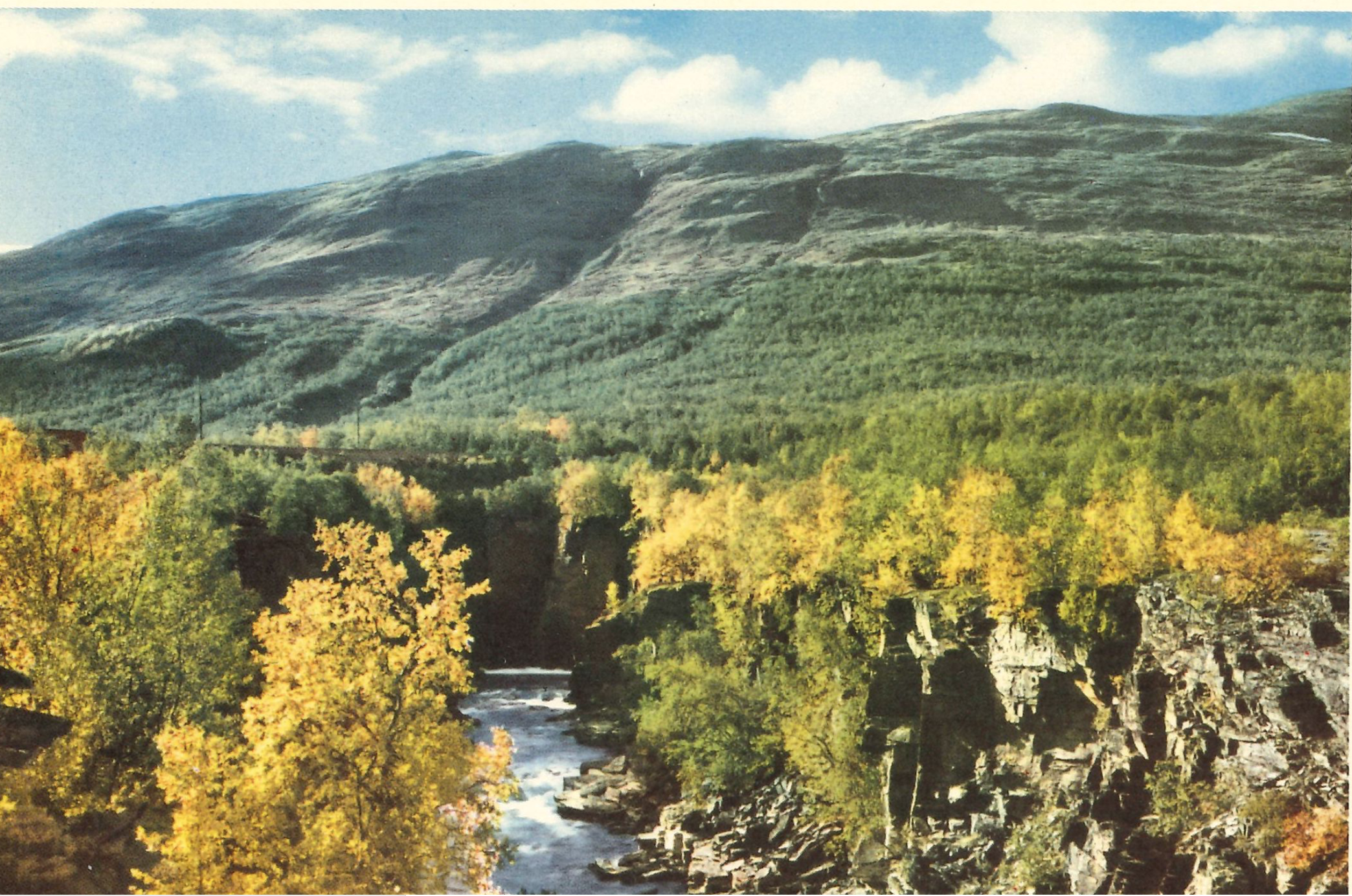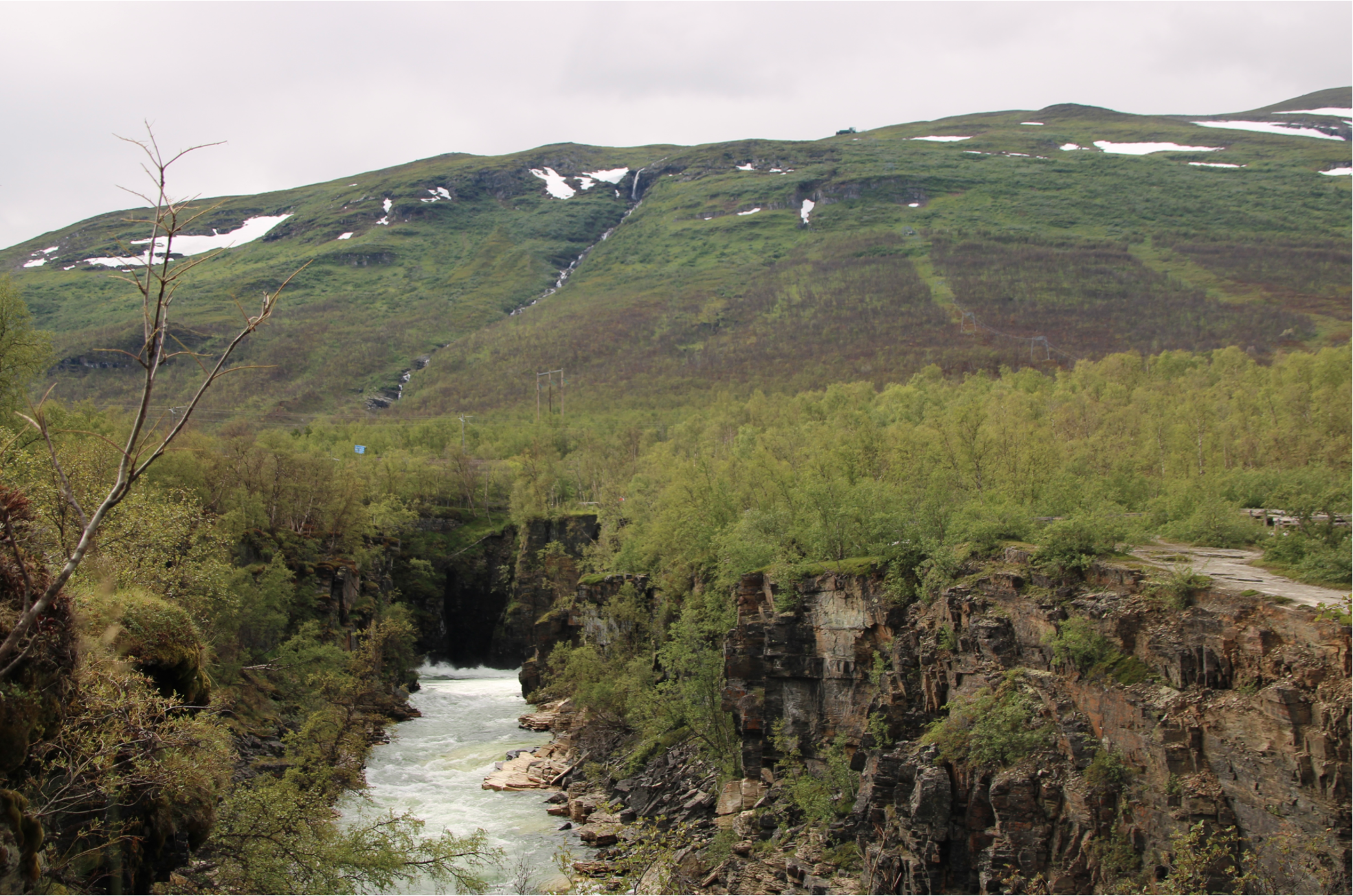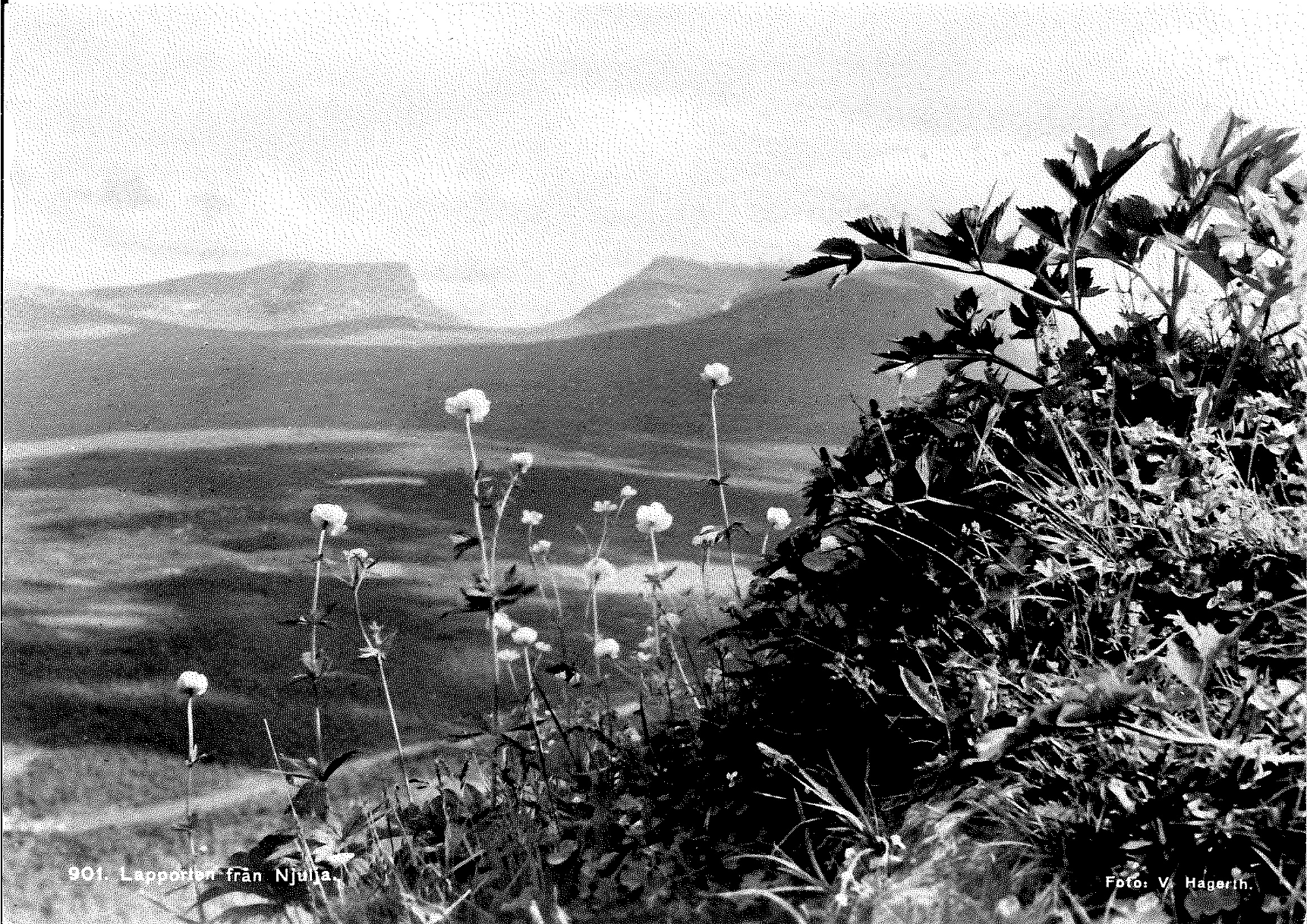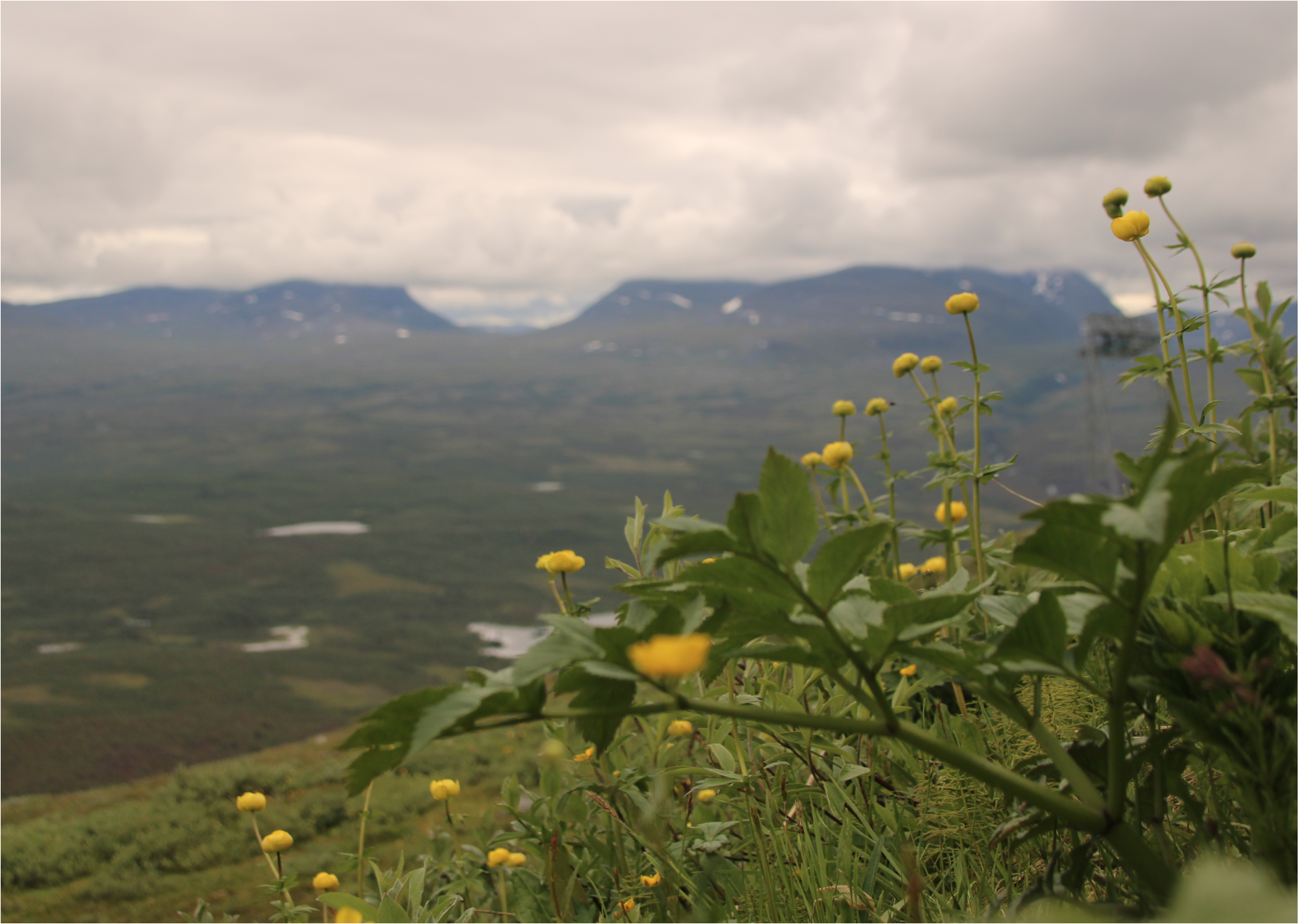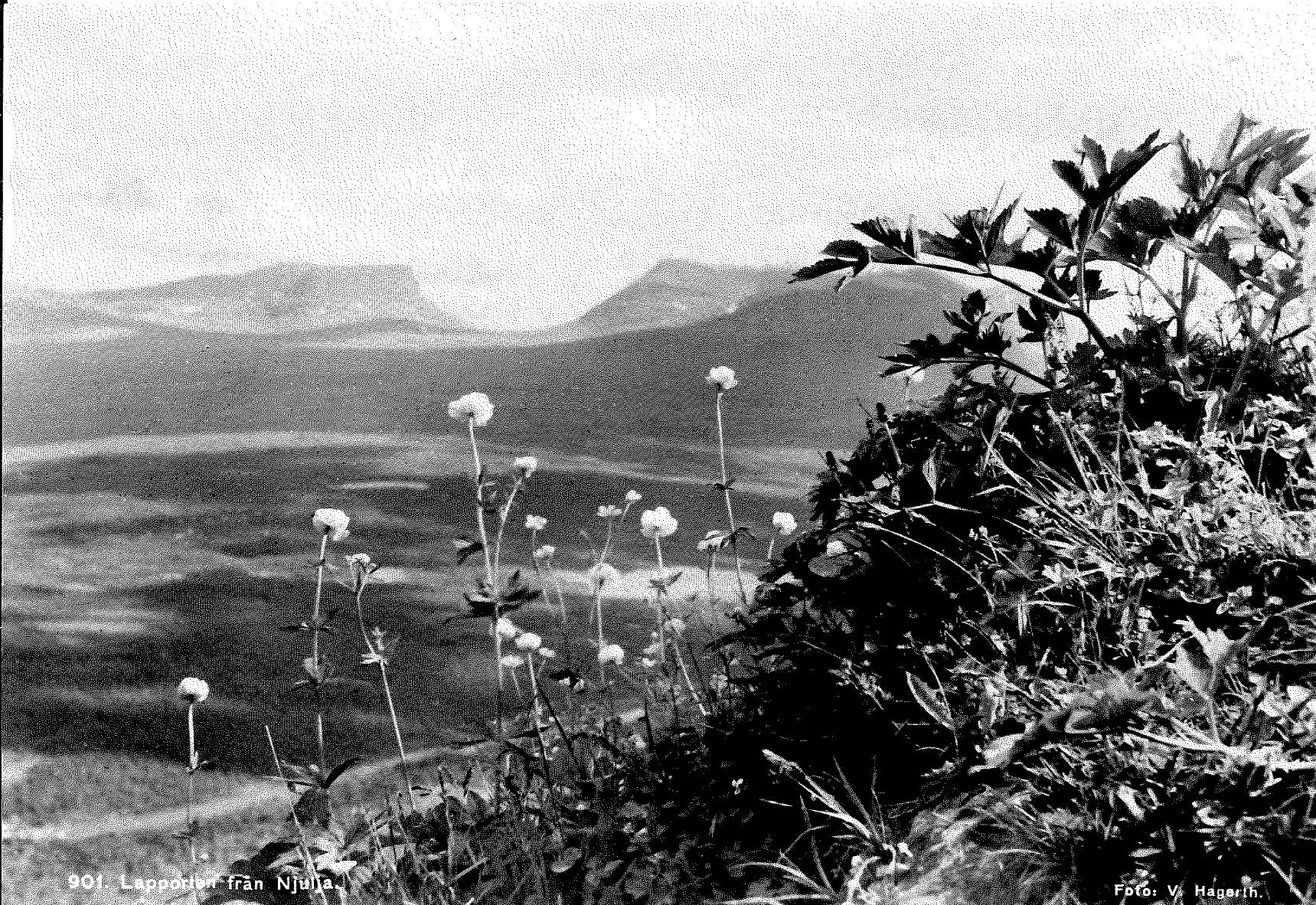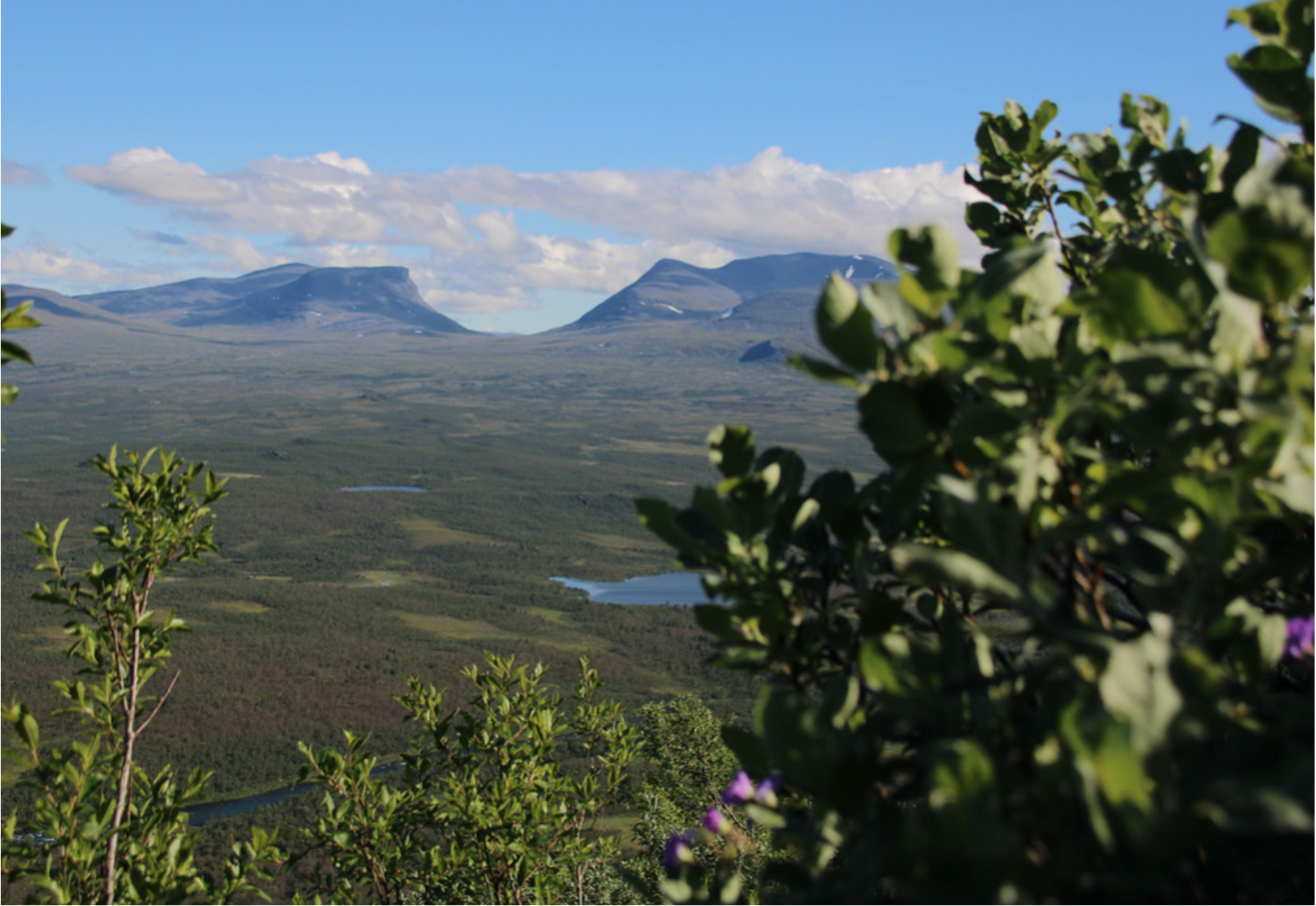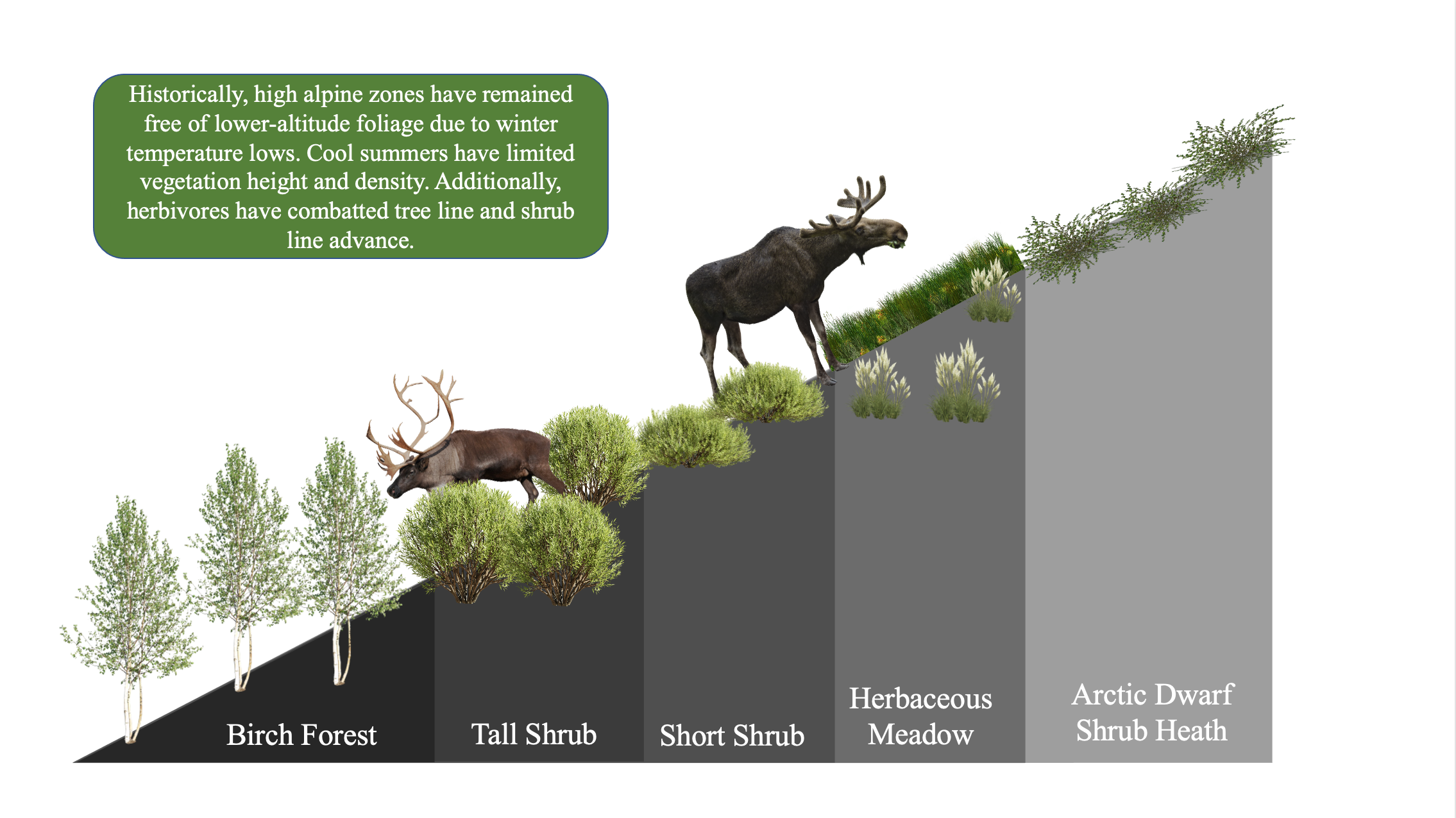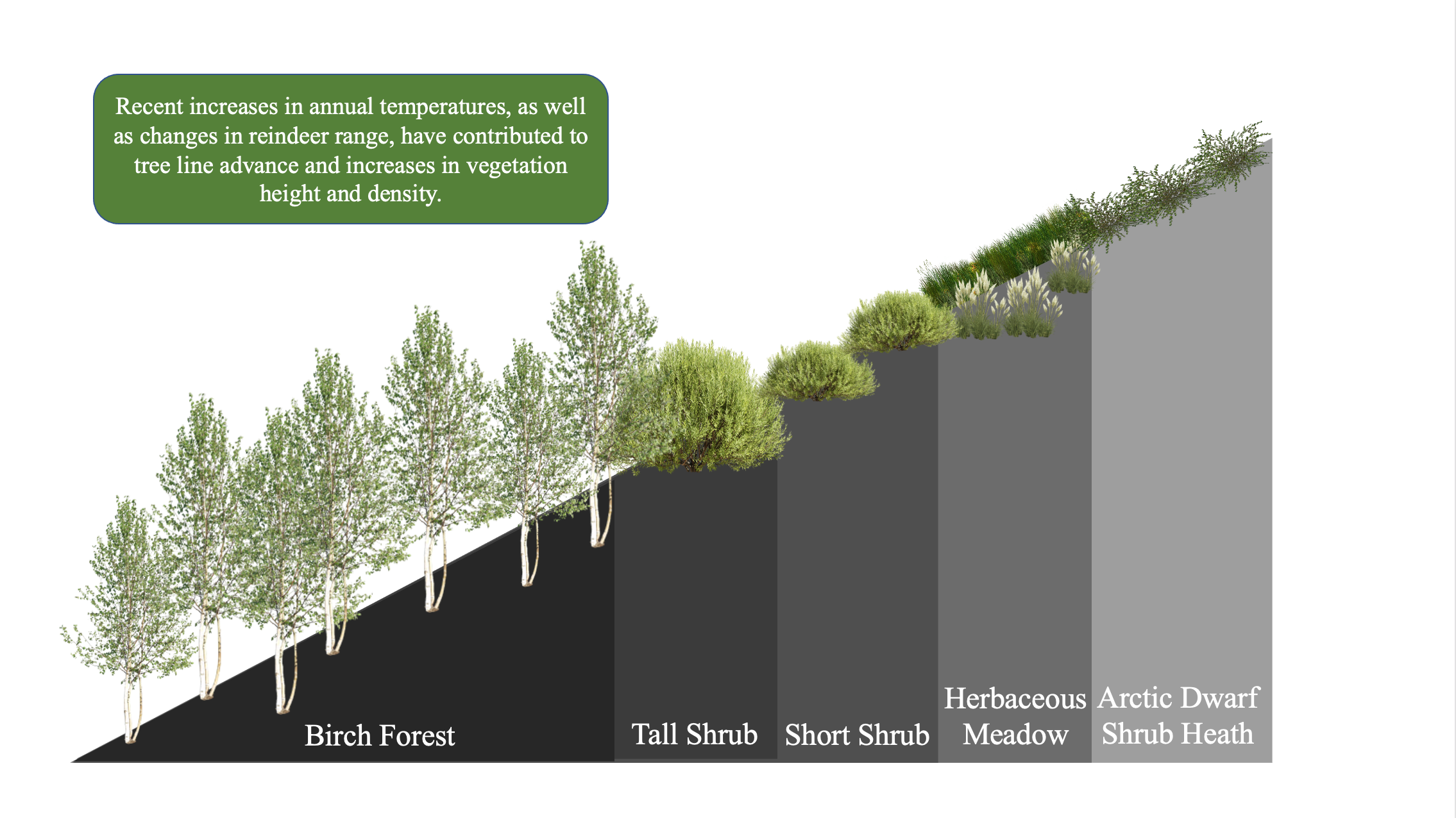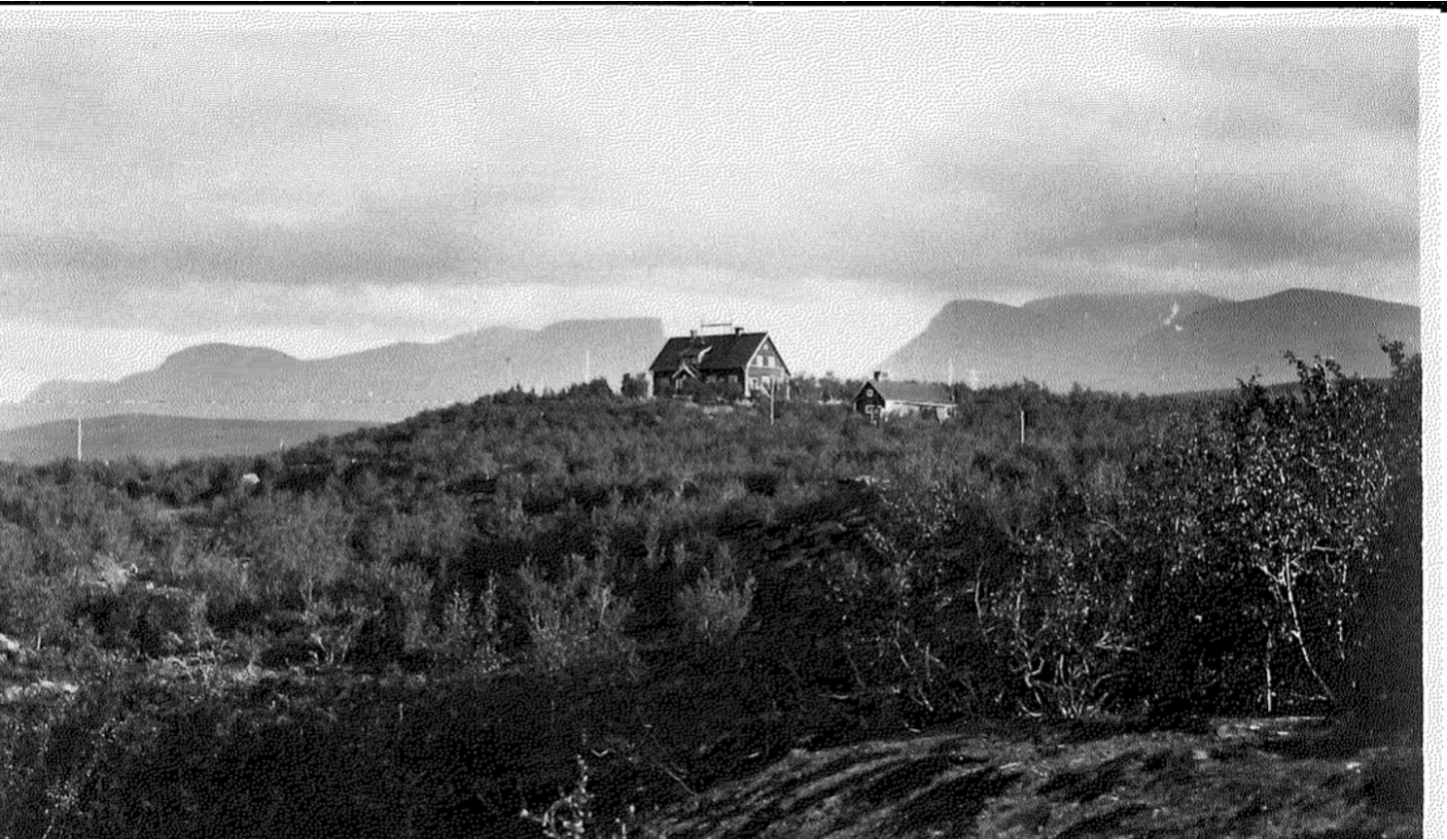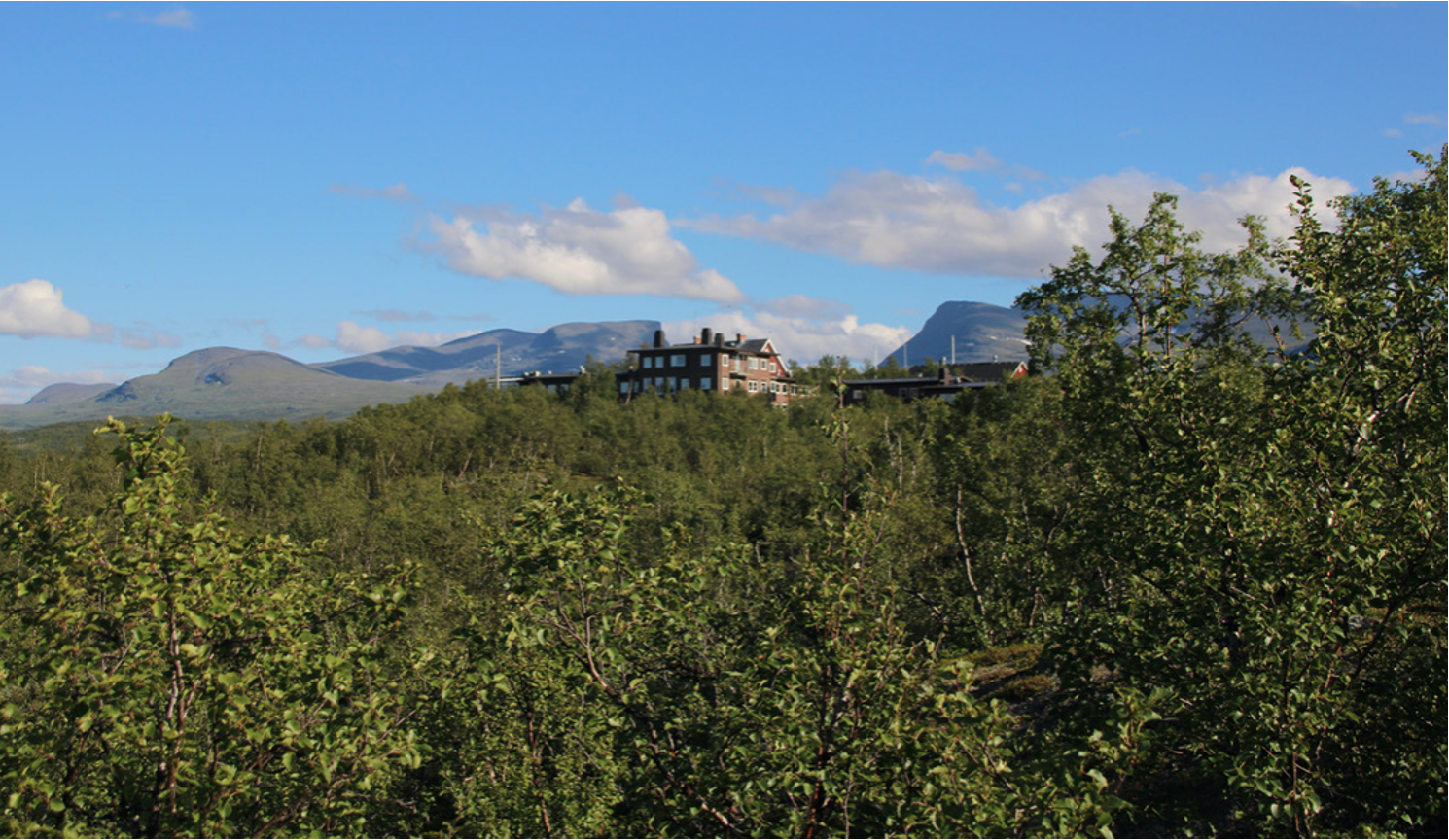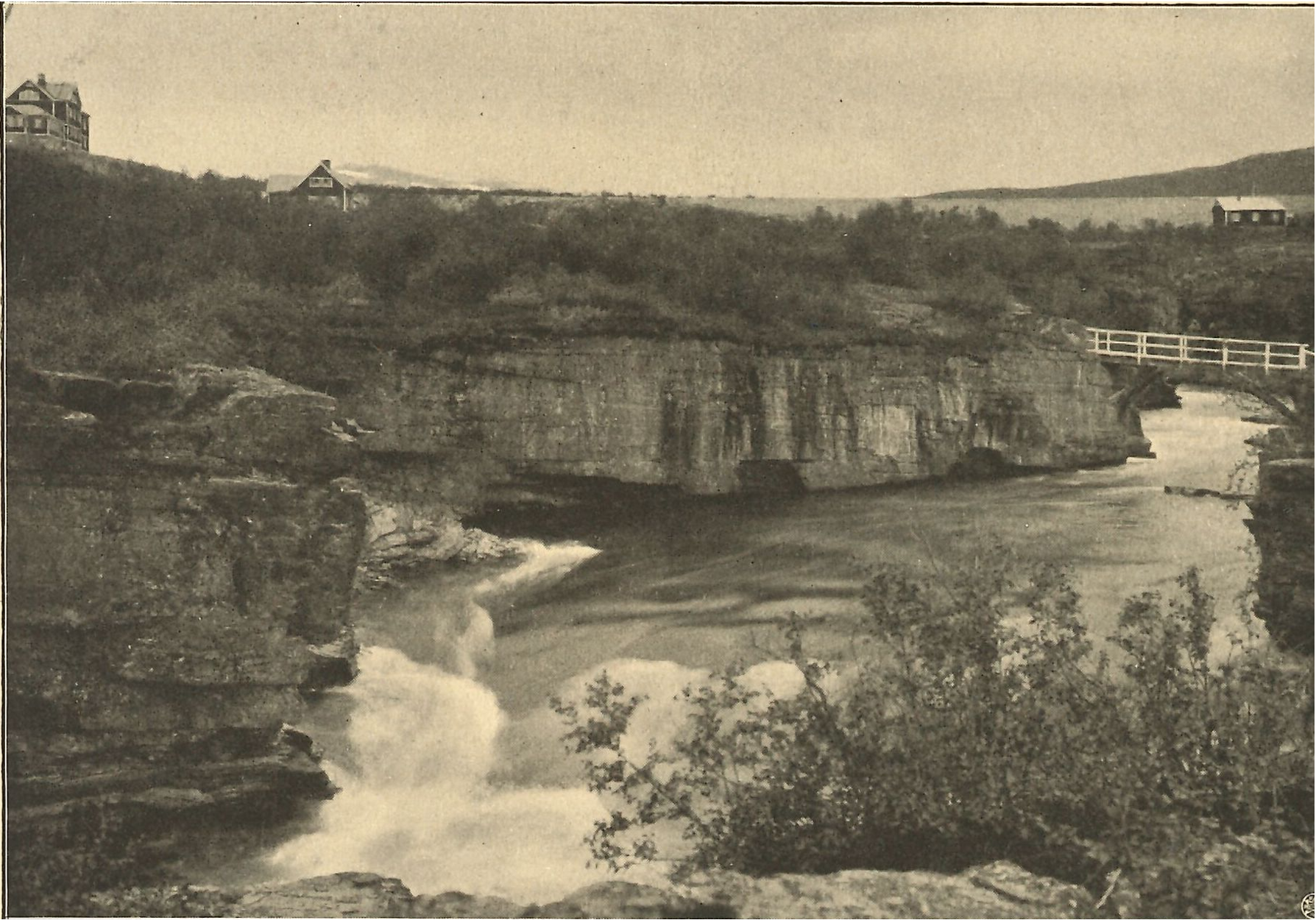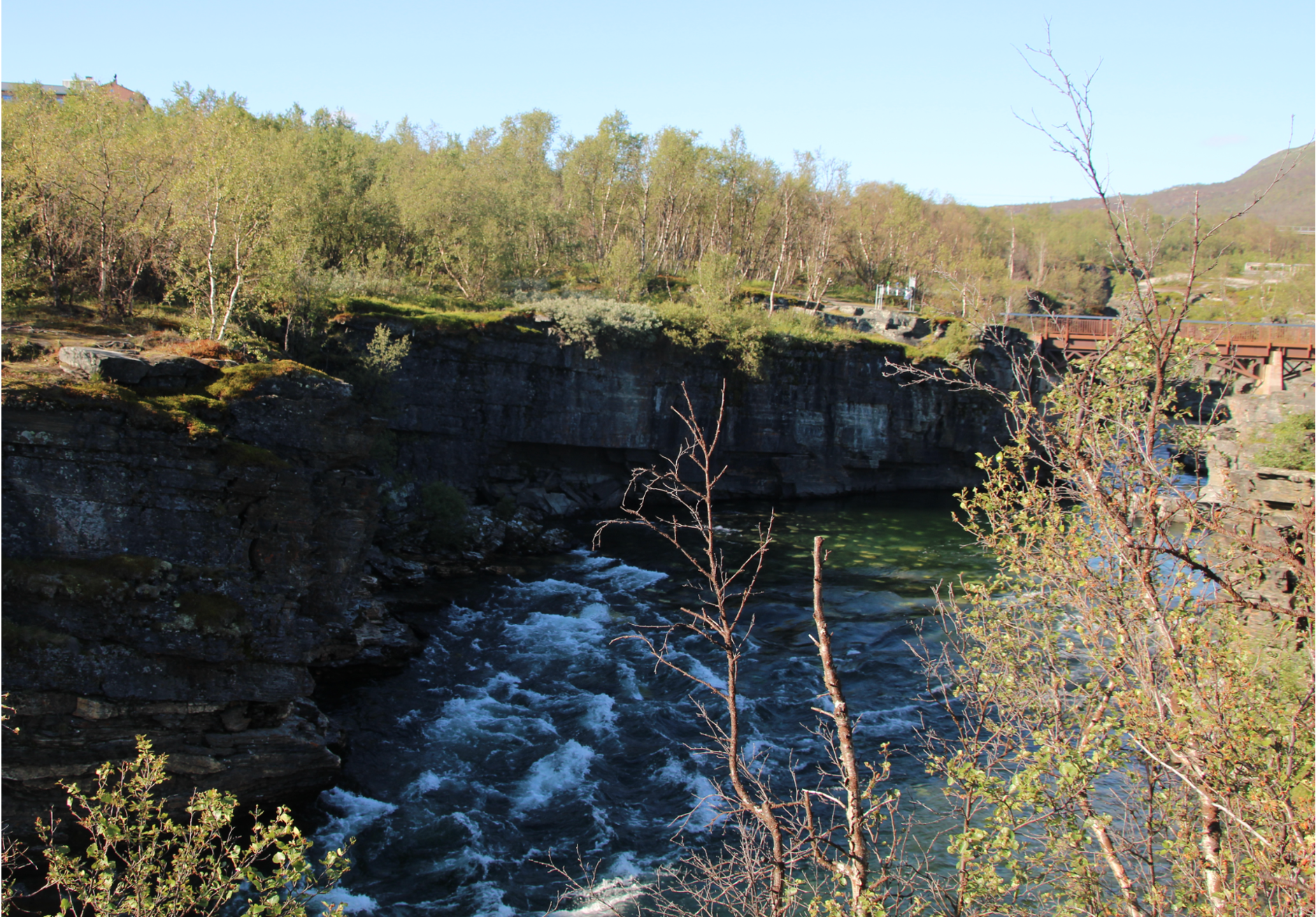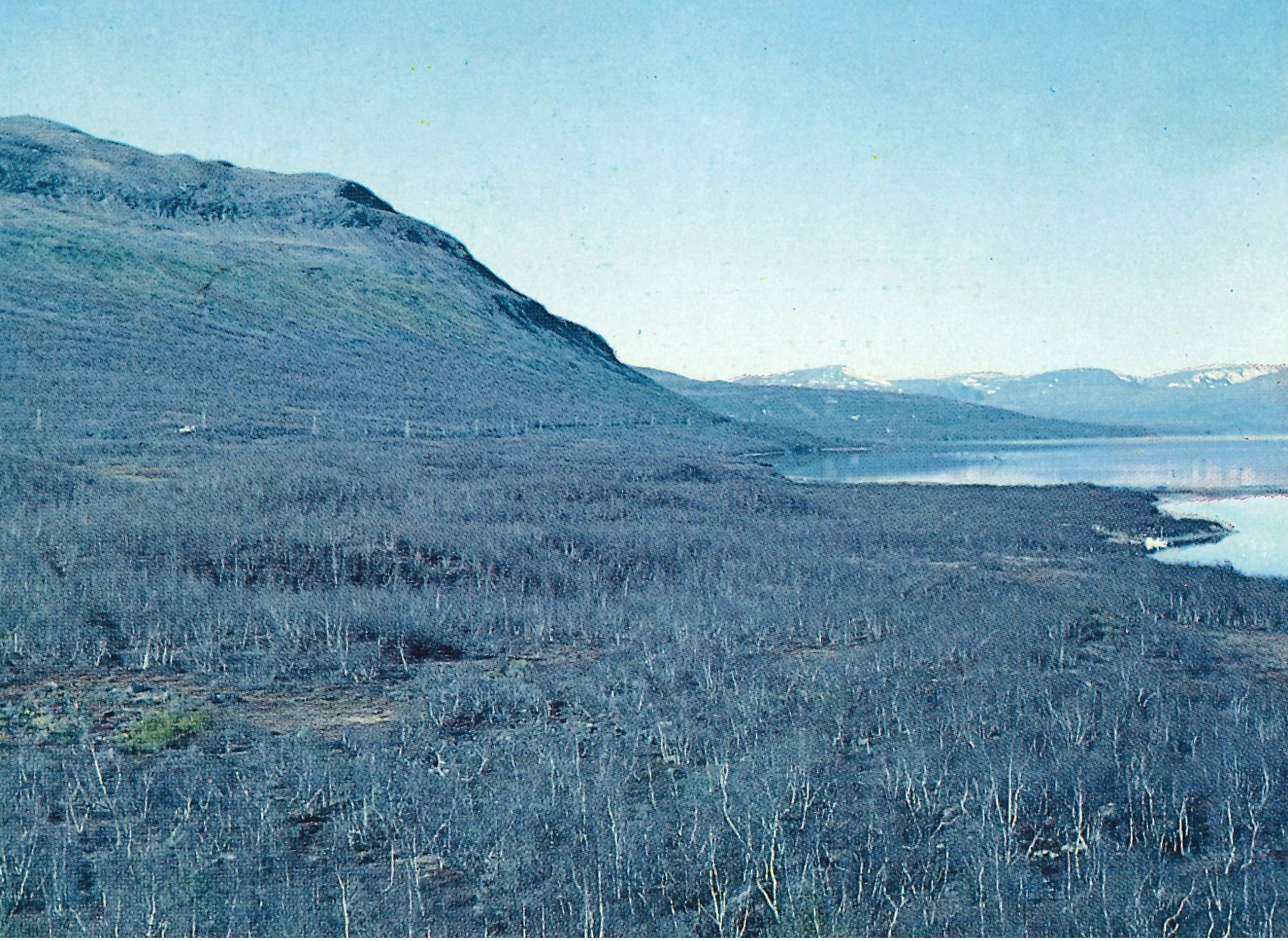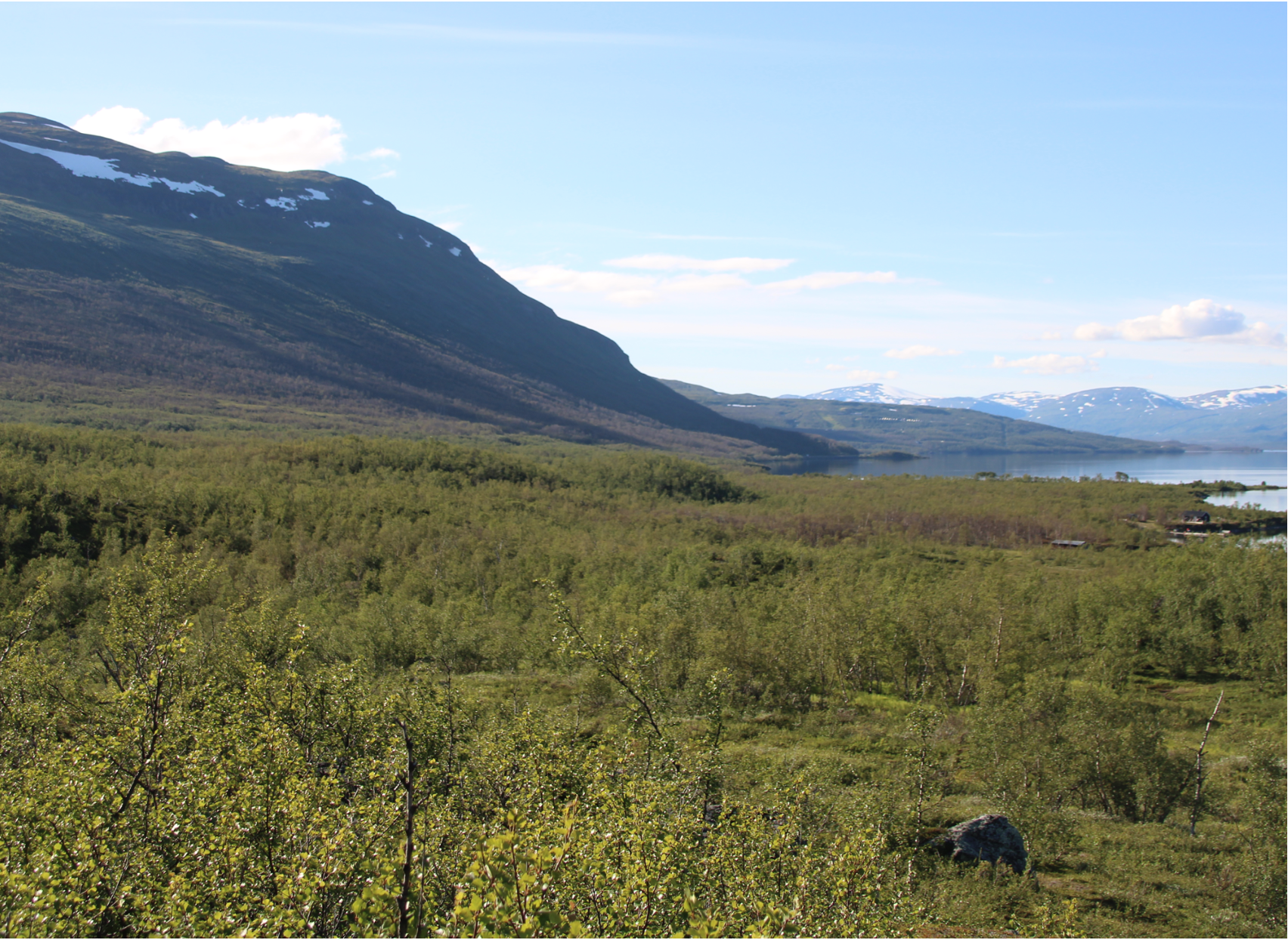Treelines
The tree line (or forest limit) marks the elevation or latitude where forest habitats transition to tundra, alpine or fell. The position of the tree line is determined by factors that limit tree growth, including the coldest winter temperatures, snowpack, and pressure from herbivores such as rodents and reindeer. As our winters become warmer, tree species are able to grow at higher altitudes and latitudes. In the past century, tree lines in Abisko National Park have moved approximately 230 meters up slope, or about 40 meters in elevation.
Scroll over these images to see how the forests have changed over time
While certain aspects of the landscape (such as snowfall) vary dramatically from year-to-year and therefore don’t always reflect the long-term impacts of climate change, tree lines persist over longer time periods. Therefore, they can serve as a fingerprint of change due to our rapidly changing climate and land use. Photographs are an excellent way to visualize changes in the tree line over time, and allows us to visualize other human impacts such as clearings for ski runs.
It’s not just trees that are able to move up-slope - many species including shrubs and flowering plants are on the move. Certain species, such as the abundant globe flower (Trollius europaeus) shown in the above photographs, are now found at higher altitudes than they were during the early 20th century. While they may remain prevalent within their previous range boundaries, they now share these elevations with other traditionally alpine or fell species.
While climate change is a clear marker of humanity’s impact on the Arctic, these ecosystems may also be directly affected by the presence of humans in the area - tourism, infrastructure, and general human traffic. Even as the climate warms, tree line advance may be suppressed by grazing animals such as reindeer - unfortunately infrastructure and the presence of humans tend to repel these charismatic herbivores, contributing to rapid tree line advance. This is just one example of the many ways in which direct human impacts can accelerate the ecological shifts caused by climate change.
In addition to moving upslope and to higher latitudes, vegetation faced with rising annual temperatures also shows an increase in both height and density. While tree line advance is dependent on winter warming (as elevation restrictions reflect annual temperature lows), foliage height and density are related to increases in spring and summer temperatures. These increases are thought to apply to trees, shrubs, forbs, and grasses, but not to other species such as mosses. The relative prevalence of specific plant types is also modulated by local factors, such as the presence of permafrost and soil moisture.
When examining the tree line photographs, you will notice that the forests up to the tree line in 2022 appear leafless and barren. This is due to an outbreak of herbivorous moths whose larvae feed on birch leaves. There are two main species in the Abisko area, Epirrita autumnata (autumnal moth) and Operophtera brumata (winter moth), both which increase in abundance to peak about every decade. The abundance of these two species during an outbreak determines the extent of the damage to birch trees. Unfortunately, there is evidence that the geographical range of both species is increasing along with rising temperatures, as these moths are limited by their cold tolerance. As both species have advanced northwards, the winter moth has encroached on territory formerly occupied only by the autumn moth. Climate warming has the potential to affect not only the ranges, but the decadal synchrony of these species. This temporal and spatial overlap has the potential to increase the severity of the outbreak cycles.

